Bridge Design & Analysis Software
Complete Analysis Options
Construction Stage Analysis
|
A specific construction stage pertaining to a structural model can be exported as a final stage. With this option, users can perform time history, seismic or moving load analyses at various stages of construction. |
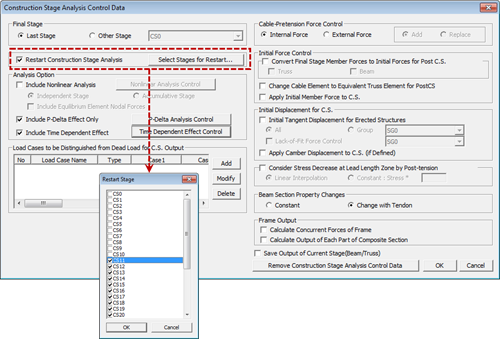 |
|
The Any construction stage can be easily deleted, or new stages can be inserted. The order of construction stages can also be revised. The works tree menu allows you to systematically check and revise the structure and loading conditions for each construction stage. |
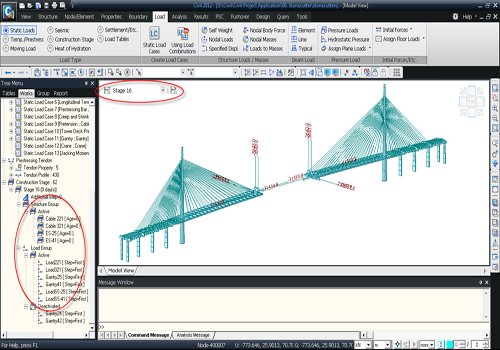 |
|
Define each stage based on sequential structural changes reflecting erection and dismantlement of temporary structures, varying boundary conditions, etc. Define timing steps representing the timing of loading and unloading specific load cases within a given construction stage, without any change in structure. |
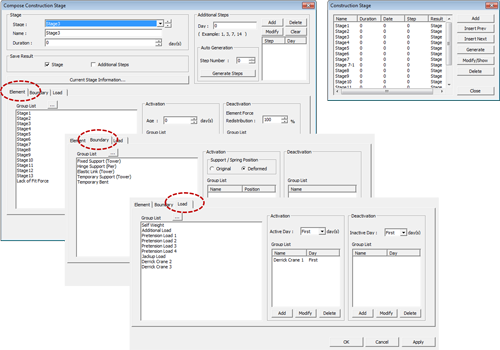 |
|
The construction stage analysis feature allows the user to specify |
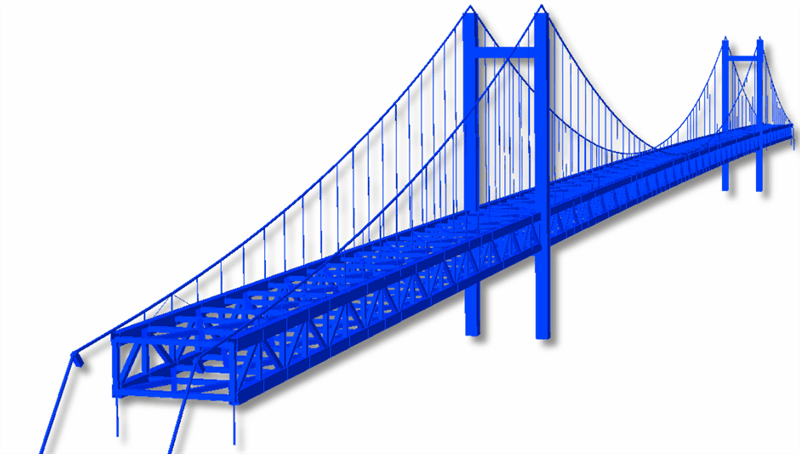 |
Moving Load Analysis
|
midas Civil automatically generates a transverse analysis model from the global analysis model. Upon selecting a point in the primary direction, the wizard generates a 2-dimensional frame model, which intersects the point, generating the section properties for analysis. In addition to the geometrical section properties, the user can also assign loads (ex. dead loads, live loads, etc.), tendons and reinforcements. |
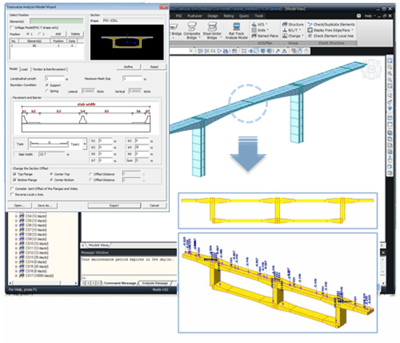 |
|
The moving load tracer determines the location of a moving load that imposes the maximum member forces. Forces and stresses in beam members resulting from detailed analyses of individual elements can then be verified with beam diagrams. With plate models, the local direction force sum combines the nodal forces of plate or solid elements and calculates the member forces at specified positions. |
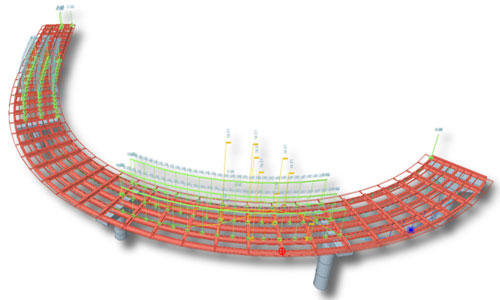 |
|
For moving load analyses, midas Civil provides a database of standard vehicular loads. Users can also define separate vehicular loads - AASHTO Standard - AASHTO LRFD - - Canada - BS - EUROCODE - Australia - Poland - Russia - South Africa - Korea - KSCE-LSD15 - China - India - Taiwan - Transverse |
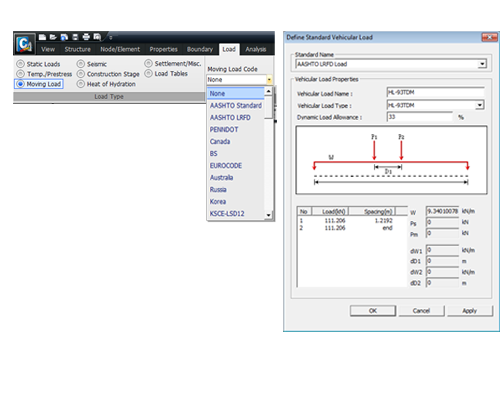 |
Analysis of Composite Girder Bridge
|
midas Civil provides various features for composite girder bridge design where it is important to check the member forces for both before and after composite actions. This eliminates the need to managing two different analysis models and results.
|
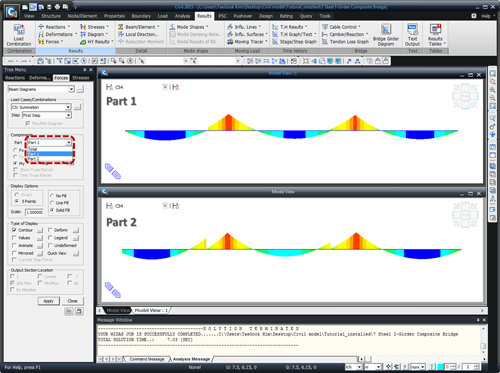 |
|
|
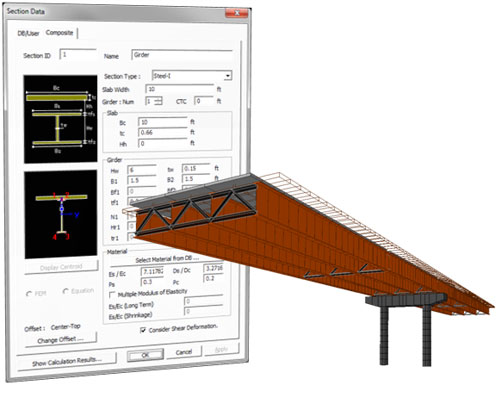 |
|
midas Civil provides various features for composite girder bridge design where it is important to check the member forces for both before and after composite actions. This eliminates the need to managing two different analysis models and results. |
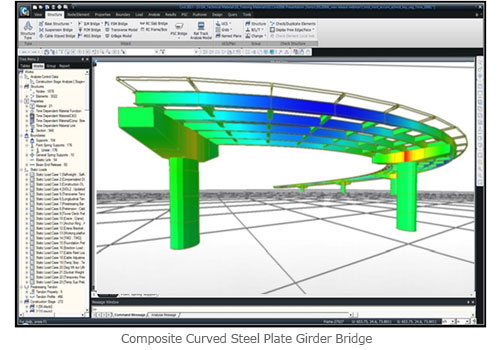 |
|
Soil-Structure Interaction Overview The prime concern in integral bridges is the effects of temperature variations on the deformation of the bridge deck. Expansion and contraction of the bridge deck affect the backfill soil adjacent to the abutments. Backfill compaction due to deck expansion and soil slide due to a deck contraction are repeated. Due to the repeated backfill compaction and soil slide, the modulus of subgrade reaction and the pressure distribution of backfill vary with depth. For this, Midas Civil provides Multi-linear type point spring support. Also, the program can automatically calculate the soil stiffness by entering the required data such as soil type and subgrade reaction.
|
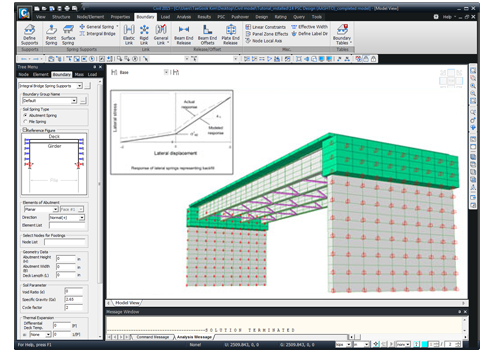 |
Analysis of PSC Box Bridge
|
Production of maximum stresses at the left/right sides on a transverse cross-section of a curved bridge. Production of member forces of the structure when the maximum force due to a moving load is applied. Production of various diagrams (member forces, stresses, displacements, reactions, etc.) for reviewing analysis results for each construction stage (stages & time steps) Provision of animations of analysis results for each construction stage. Report on prestress losses due to curvature and time variation. |
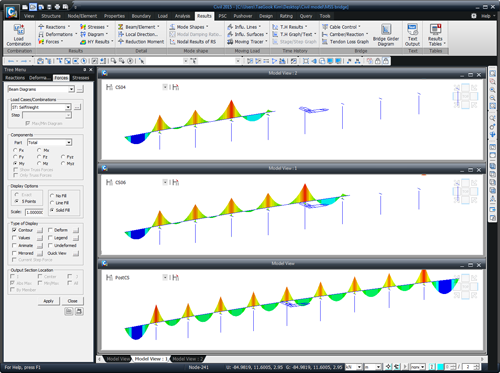 |
|
Tendons can be defined at any location and checked with transverse Short-term prestress losses are considered for the effects of anchor slippage of tendons, friction between tendons and sheaths, and elastic concrete shortening. Long-term prestress losses are considered for the effects of creep, shrinkage Variation of prestresses in tendons
|
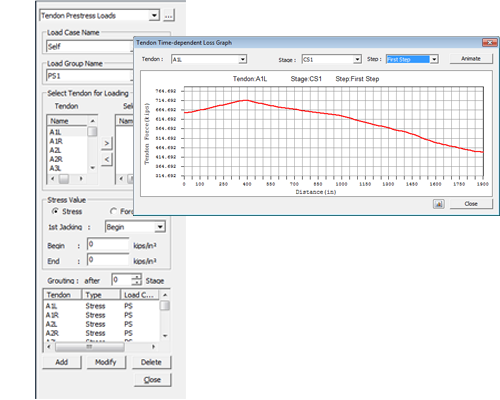 |
|
Calculation of prestress loss for tendons with 3D profiles or curvatures. Prestressing effects considered for pre-/post-tensioning and internal/external placing methods. Free tendon Placement irrespective of nodes. |
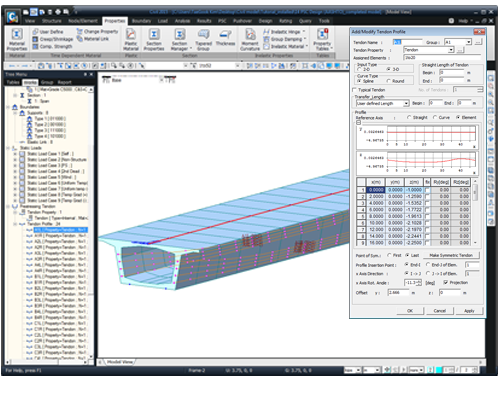 |
|
midas Civil provides standardized PSC box sections for PSC box girder bridges for easy and practical modeling and analysis.
|
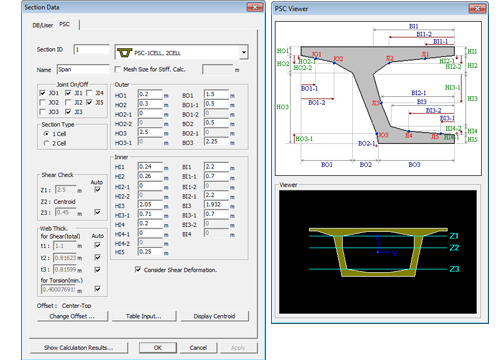 |
|
|
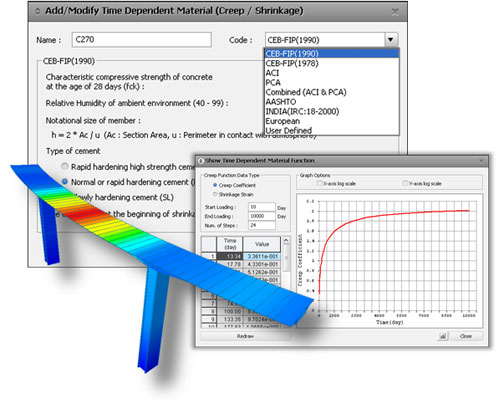 |
Segmental Bridge Construction Analysis
|
midas Civil automatically generates the composition of construction stages and models for MSS/FSM bridges. |
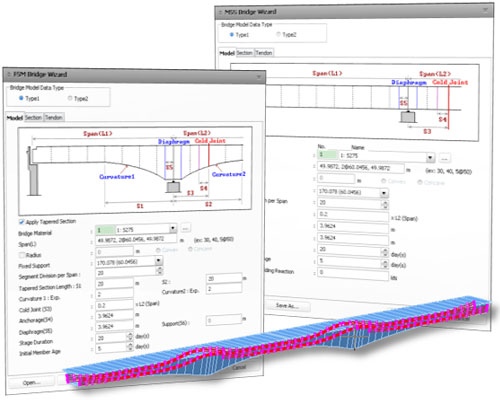 |
|
An FCM bridge model with construction stages can be automatically generated after defining only cross sections, tendon placements and bridge configuration data. |
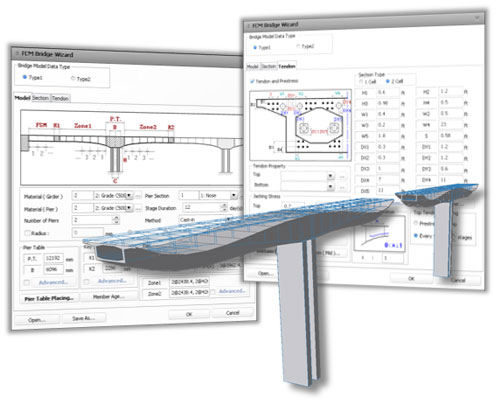 |
|
Using the ILM bridge model wizard, enter the number of segments and the corresponding data to generate the entire bridge configuration. Basic construction stages (activation of segments) can be automatically generated on the basis of the number of segments entered. |
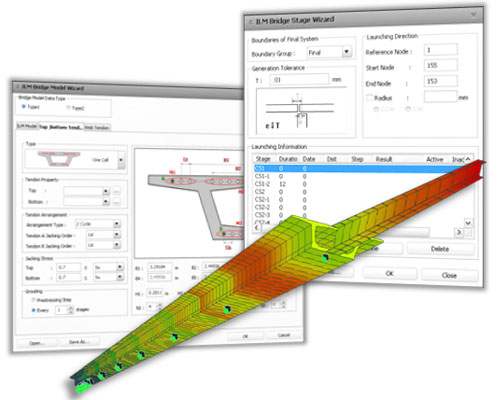 |
Suspension Bridge Analysis
|
Composed of flexible cables. The suspension bridge wizard in midas Civil automatically calculates the cable coordinates and tensions of the final structure. Also, using 3D elastic suspension line elements and equivalent truss elements, midas Civil can consider nonlinear characteristics of the cables. It supports geometric nonlinear analysis as well as construction stage analysis. |
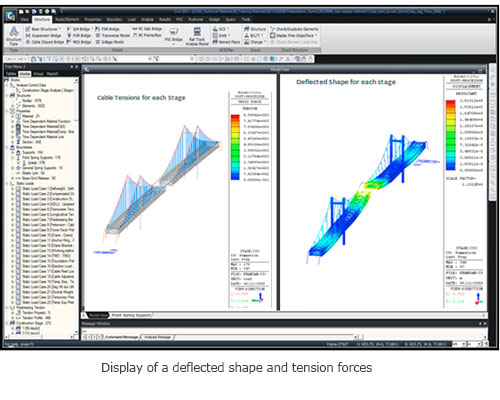 |
|
Composed of flexible cables. The suspension bridge wizard in midas Civil automatically calculates the cable coordinates and tensions of the final structure. Also, using 3D elastic suspension line elements and equivalent truss elements, midas Civil can consider nonlinear characteristics of the cables. It supports geometric nonlinear analysis as well as construction stage analysis. |
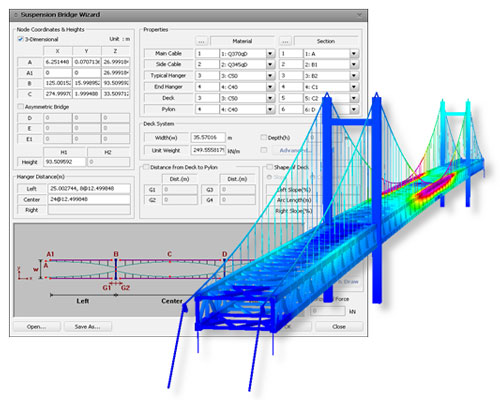 |
Heat of Hydration Analysis
|
midas Civil provides heat of hydration analysis capabilities considering heat transfer and stresses. |
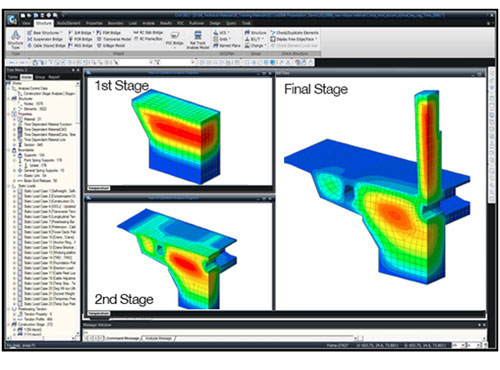 |
|
midas Civil provides heat of hydration analysis capabilities considering heat transfer and stresses. The heat of hydration analysis with construction stages reflects the changes of the modulus of elasticity due to maturity, effects of creep and shrinkage, pipe cooling, and concrete pour sequence. |
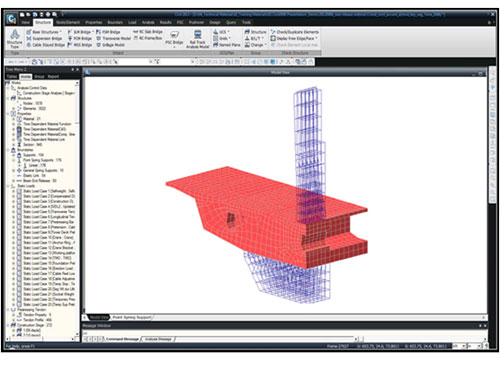 |